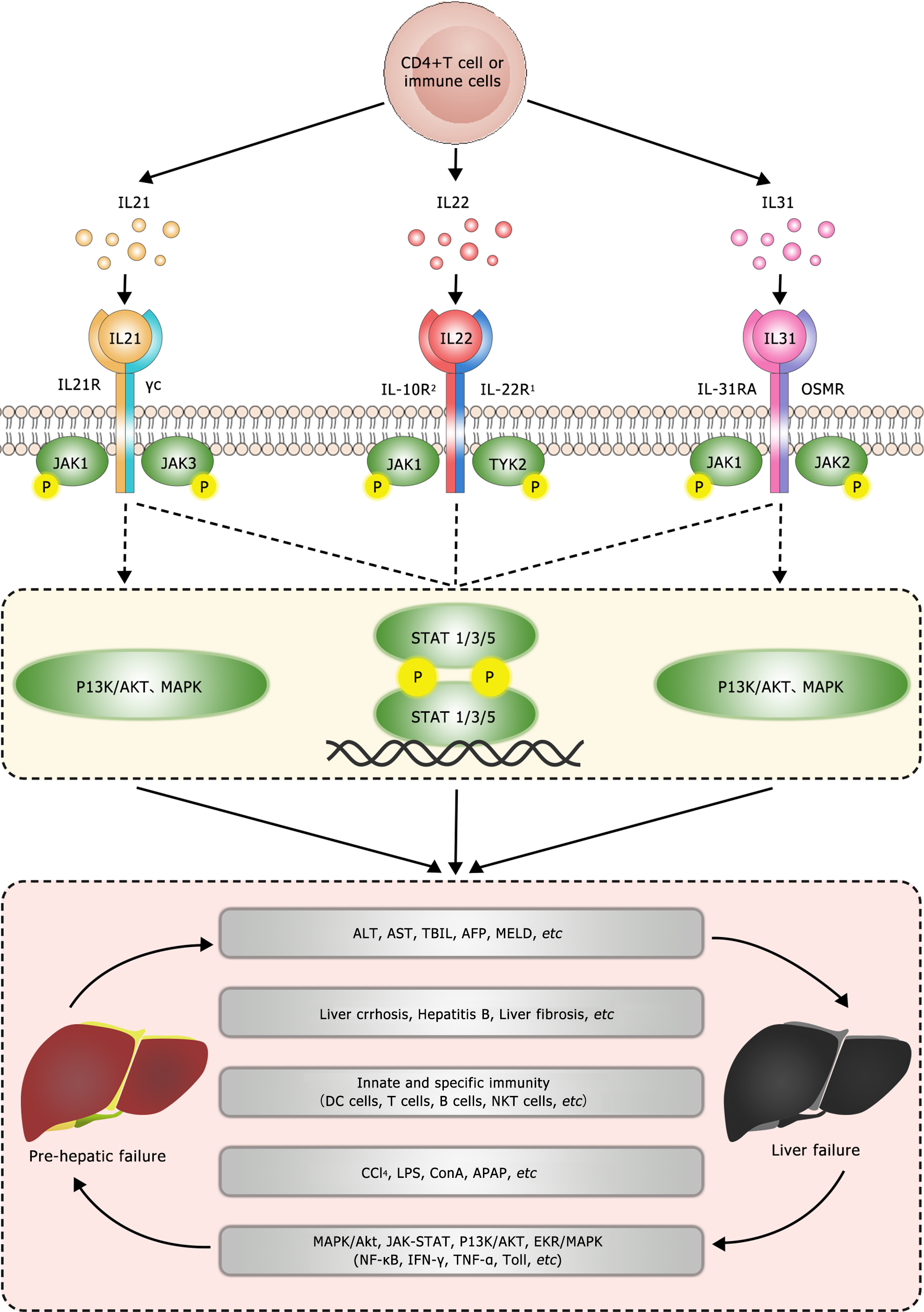Copyright
©The Author(s) 2024.
World J Clin Cases. Sep 26, 2024; 12(27): 6045-6056
Published online Sep 26, 2024. doi: 10.12998/wjcc.v12.i27.6045
Published online Sep 26, 2024. doi: 10.12998/wjcc.v12.i27.6045
Figure 2 Molecular mechanisms underlying the involvement of interleukin 21 (IL-21), IL-22, and IL-31 in liver failure (diagram depicts the signaling pathway of ILs and their involvement in liver failure).
It starts with a CD4+ T cell or immune cell at the top, which secretes three different types of interleukin (IL): IL-21, IL-22, and IL-31. Each IL binds to its specific receptor on the cell surface: IL-21 binds to the IL-21 receptor (IL-21R), IL-22 binds to the IL-10R2 and IL-22R1, and IL-31 binds to the IL-31RA and oncostatin M receptor (OSMR). These receptors activate downstream signaling pathways involving Janus kinase 1 (JAK1), JAK2, JAK3, and tyrosine kinase 2 (TYK2), which phosphorylate signal transducer and activator of transcription (STAT) proteins. The activated STAT proteins then translocate to the nucleus and regulate gene expression, activating phosphoinositide 3-kinase (PI3K)/AKT and mitogen-activated protein kinase (MAPK) signaling pathways. The diagram shows that these signaling events ultimately lead to liver failure through various mechanisms, including increased levels of liver enzymes (alanine aminotransferase [ALT], aspartate aminotransferase [AST], total bilirubin [TBIL], alpha-fetoprotein [AFP], model for end-stage liver disease [MELD]), liver cirrhosis, hepatitis B, and liver fibrosis, which highlights the complex interplay between immune cells, ILs, and signaling pathways in the pathogenesis of liver failure.) APAP: Acetaminophen; CCl4: Carbon tetrachloride; ConA: Concanavalin A; LPS: Lipopolysaccharides.
- Citation: Lin Y, Yan GJ, Liu MY, Cao Y, Zhang K, Wang N, Long FL, Mao DW. Review of the potential value of serum interleukin levels as prognostic biomarkers of liver failure. World J Clin Cases 2024; 12(27): 6045-6056
- URL: https://www.wjgnet.com/2307-8960/full/v12/i27/6045.htm
- DOI: https://dx.doi.org/10.12998/wjcc.v12.i27.6045









